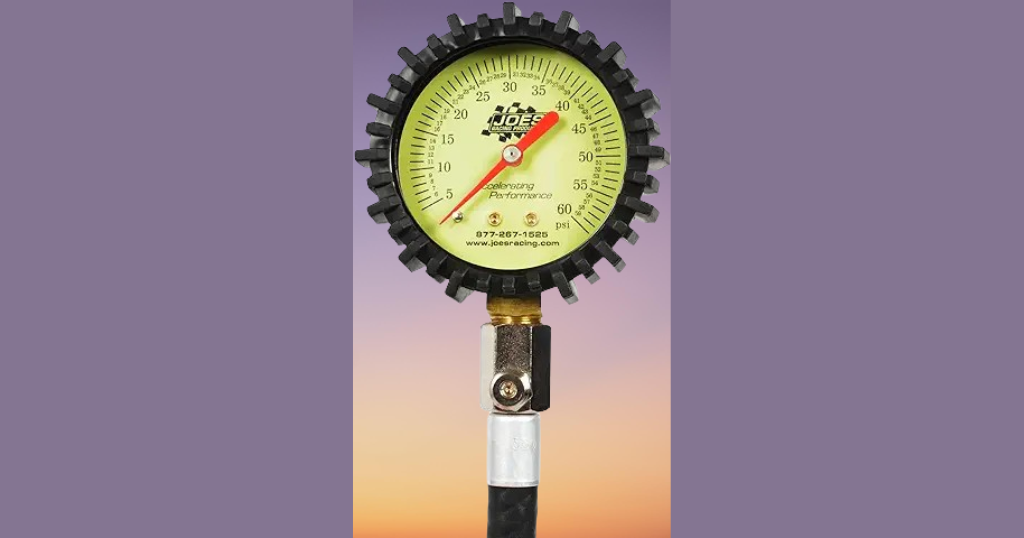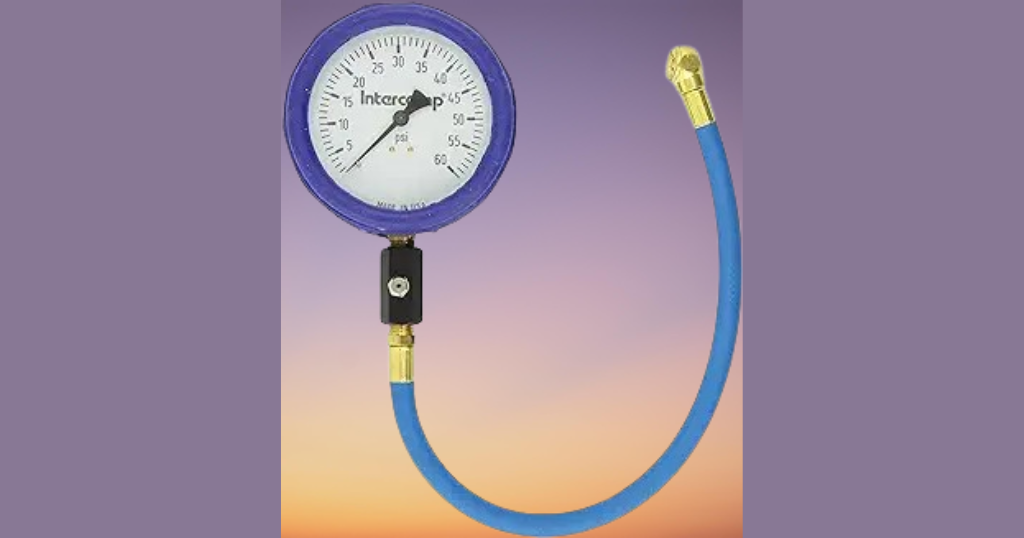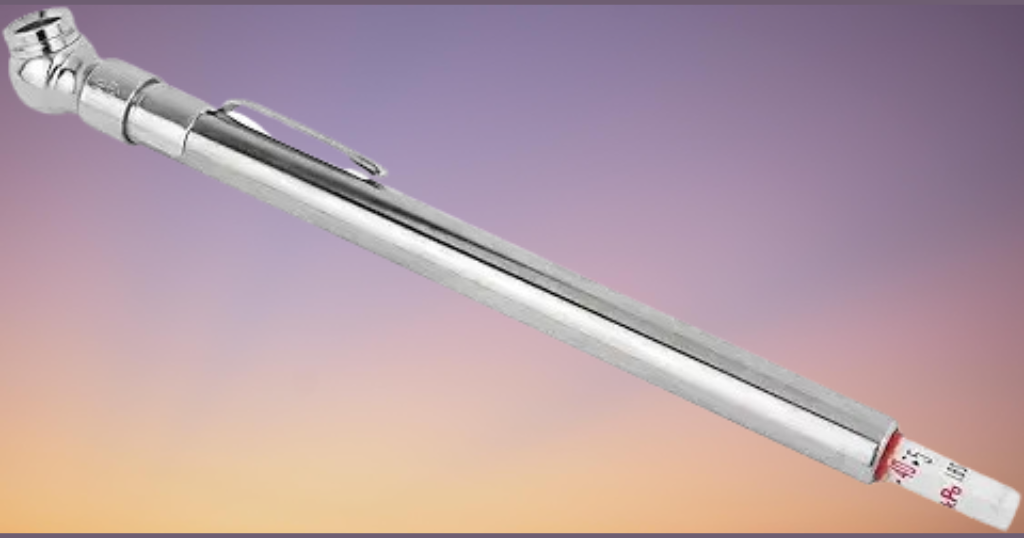Properly inflated tires are crucial for your vehicle’s safety, fuel efficiency, and tire longevity. Underinflated tires can lead to poor handling, increased wear, and even dangerous blowouts. Overinflated tires can result in a harsh ride and make your tires more susceptible to damage from potholes and debris. That’s why it’s essential to regularly check your tire pressure with a reliable gauge.
Fortunately, checking your tire pressure is a quick and easy task that anyone can do with the right tool. A good tire pressure gauge is an inexpensive investment that can save you money and keep you safe on the road. But with so many options available, from simple pencil gauges to high-tech digital units, how do you choose the best one for your needs?
In this article, we’ll take a deep dive into the world of tire pressure gauges. We’ll explain the different types available and what to look for when shopping for one. Most importantly, we’ll share our picks for the best tire pressure gauges on the market based on our extensive testing and research. Whether you’re a professional mechanic or a casual driver, we’ve got you covered with gauges that are accurate, durable, and easy to use. Let’s get started!
Best Tire Pressure Gauges of 2024
Best Overall: Joes Racing 32307 Tire Pressure Gauge

After thorough testing, our top pick for the best tire pressure gauge is the Joes Racing 32307. This analog gauge consistently delivered the most accurate pressure readings across a wide range of tires and vehicles. It’s a well-built, durable tool that should provide years of reliable service.
The Joes Racing gauge features a large, 2.5″ glow-in-the-dark dial face that’s easy to read in any lighting conditions. The dial is protected by a rubber boot that helps absorb impact and prevents damage if you accidentally drop the gauge. We appreciated the 17″ braided hose that provides plenty of reach for checking tires on larger vehicles.
One standout feature of this gauge is the 360-degree swivel chuck. This allows you to easily connect the gauge to the valve stem at any angle, making it much easier to get a good seal without bending the stem. The bleeder valve is conveniently located and allows you to release air pressure to hit your target inflation level.
In our tests, the Joes Racing gauge consistently provided readings within 1 psi of our reference gauge, which is excellent accuracy for an analog unit. The gauge has a range of 0-60 psi, which is suitable for most passenger vehicles. If you need to measure higher pressures for RVs or commercial trucks, Joes Racing also offers 0-100 psi and 0-160 psi versions.
While this gauge is a bit pricier than some basic options, its combination of accuracy, durability, and ease of use make it well worth the investment. Whether you’re a professional mechanic or a DIY enthusiast, the Joes Racing 32307 is a top-quality tire pressure gauge that won’t let you down. If you want the best of the best, this is the gauge to get.
Pros:
- Highly accurate readings within 1 psi
- Large, easy-to-read glow-in-the-dark dial
- 360-degree swivel chuck for easy connection
- Convenient bleeder valve
- Durable construction with braided hose and rubber boot
Cons:
- More expensive than basic gauges
- 0-60 psi range may not be sufficient for some applications
Best Digital Gauge: Accutire MS-4021B Digital Tire Pressure Gauge

If you prefer the precision and convenience of a digital gauge, the Accutire MS-4021B is our top recommendation. This compact, handheld unit delivers fast and accurate readings with a range of helpful features.
The MS-4021B offers an impressive accuracy of ±0.5 psi thanks to its internal microprocessor and advanced pressure sensor. In our tests, it consistently matched the readings from our reference gauge, even on tires with very low or high pressure. The large, backlit LCD screen is easy to read in low light conditions and automatically shuts off after 30 seconds to conserve battery life.
One great feature of this gauge is its wide pressure range of 5-150 psi. That means it can handle everything from small car tires to large truck and RV tires. The gauge also has a built-in bleed button that allows you to accurately decrease pressure in overinflated tires.
We found the ergonomic design of the MS-4021B very comfortable to hold and use. The non-slip texture ensures a secure grip, and the angled head makes it easy to connect to valve stems in tight spaces. The included lithium battery is designed to last for years, but can be easily replaced when necessary.
Accutire is known for producing high-quality, reliable tire pressure gauges, and the MS-4021B is no exception. It’s built to last with a rugged construction that can withstand daily use and abuse. The gauge comes with a 5-year limited warranty for added peace of mind.
While this digital gauge is more expensive than a basic pencil or analog gauge, its accuracy, versatility, and ease of use justify the price for many users. If you value the precision and features of a digital gauge, the Accutire MS-4021B is an excellent choice.
Pros:
- Very accurate readings with ±0.5 psi precision
- Wide pressure range of 5-150 psi
- Large, easy-to-read backlit display
- Built-in bleed button for releasing pressure
- Comfortable, ergonomic design
- Durable construction with 5-year warranty
Cons:
- Pricier than basic analog or pencil gauges
- Some users may prefer traditional analog gauges
Best Analog Gauge: INTERCOMP 360060 Glow-In-The-Dark Tire Pressure Gauge

For those who prefer the simplicity and reliability of an analog gauge, the INTERCOMP 360060 is a top-performing option. This professional-grade gauge offers the perfect blend of accuracy, durability, and ease of use.
The standout feature of the INTERCOMP gauge is its large, 2″ glow-in-the-dark dial face. The luminescent dial is incredibly easy to read in low light conditions, such as at night or in a dimly lit garage. The dial is protected by a durable rubber boot that helps prevent damage from drops and impacts.
In our testing, the INTERCOMP gauge provided consistently accurate readings within 1 psi of our reference gauge. It has a pressure range of 0-60 psi, which is suitable for most passenger cars and light trucks. The gauge also features a built-in air bleed button that allows you to easily release pressure to fine-tune your tire inflation.
We appreciated the 12″ braided hose on this gauge, which provides plenty of flexibility for reaching valve stems on various tire sizes and positions. The hose is reinforced for long-term durability and helps protect the brass fittings from wear and corrosion.
INTERCOMP is a trusted brand in the racing and automotive industries, known for producing high-quality, accurate pressure gauges. The 360060 is built to withstand frequent use in demanding environments, with a solid brass internal mechanism and a durable outer case.
One minor drawback of this gauge is its relatively high price compared to basic analog gauges. However, the exceptional build quality, accuracy, and user-friendly features make it a worthwhile investment for anyone who values precision and reliability.
If you’re looking for a top-performing analog tire pressure gauge that’s easy to read and built to last, the INTERCOMP 360060 is an excellent choice. Its combination of accuracy, durability, and usability earns it our top recommendation in the analog category.
Pros:
- Large, easy-to-read glow-in-the-dark dial
- Accurate readings within 1 psi
- Built-in air bleed button for precise adjustments
- Durable rubber boot and braided hose
- High-quality brass internal components
- Trusted brand with a reputation for accuracy
Cons:
- More expensive than basic analog gauges
- 0-60 psi range may not be sufficient for some heavy-duty applications
Best Pencil Gauge: Milton S-921 Single Chuck Pencil Tire Pressure Gauge

For those who prioritize portability and simplicity, a pencil tire pressure gauge is an excellent option. Our top pick in this category is the Milton S-921 Single Chuck Pencil Tire Pressure Gauge. This compact, lightweight gauge is easy to store in a glove box or tool kit, making it perfect for on-the-go tire checks.
Despite its small size, the Milton S-921 delivers accurate readings within 1-2 psi of our reference gauge. It has a pressure range of 5-50 psi, which covers most passenger car and light truck tires. The gauge also features a built-in deflator valve, allowing you to release air pressure with a simple push of a button.
One unique feature of this gauge is its integrated “true blue” inner tube. This tube provides a tight seal on the valve stem to prevent air leaks during measurement, ensuring consistent and reliable readings. The tube is also replaceable, extending the life of the gauge.
The Milton S-921 is constructed from durable plated brass, which resists corrosion and wear over time. The gauge has a sleek, streamlined design with a knurled grip for a secure hold. The compact size makes it easy to slip into a pocket or toolbox for convenient storage.
While pencil gauges may not offer the same precision as digital gauges or the easy readability of large analog dials, they serve an important role for quick, on-the-spot pressure checks. The Milton S-921 stands out in this category for its accuracy, build quality, and added features like the deflator valve and replaceable inner tube.
If you’re looking for a reliable, portable tire pressure gauge to keep in your vehicle for emergency checks or to supplement your primary gauge, the Milton S-921 is an excellent choice. Its combination of accuracy, durability, and convenience makes it our top pick among pencil gauges.
Pros:
- Compact and lightweight for easy portability
- Accurate readings within 1-2 psi
- Built-in deflator valve for releasing pressure
- “True Blue” inner tube for a tight seal and replaceable design
- Durable brass construction with knurled grip
- Affordable price point
Cons:
- Limited pressure range compared to larger gauges
- Small size may be difficult to read for some users
- Not as precise as digital gauges
Also Great: AstroAI Digital Tire Pressure Gauge

If you’re looking for an affordable digital tire pressure gauge with a few extra features, the AstroAI Digital Tire Pressure Gauge is a great option to consider. While it may not have the same precision or durability as our top digital pick, it offers excellent value for the price.
The AstroAI gauge provides accurate readings within 1 psi of our reference gauge, which is more than sufficient for most users. It has a pressure range of 0-150 psi, making it suitable for a wide variety of tires, including those on cars, bikes, and trucks.
One standout feature of this gauge is its large, backlit LCD screen. The screen automatically illuminates in low light conditions, making it easy to read your pressure measurements at night or in a dimly lit garage. The display also rotates 180 degrees, allowing you to easily read the screen from any angle.
The AstroAI gauge is designed with a grippy, textured surface that helps prevent slips and drops. It also comes with a rubber sleeve for added protection and includes a set of four valve stem caps as a bonus. The gauge automatically shuts off after 30-40 seconds to conserve battery life, and the included CR2032 lithium battery is easy to replace when needed.
While the AstroAI gauge may not have the most durable construction or the longest warranty, it still feels solid and well-made for the price. It’s a great choice for occasional use or as a backup gauge to keep in your vehicle.
If you prioritize value and want a digital gauge with a clear, easy-to-read display and a few extra features, the AstroAI Digital Tire Pressure Gauge is definitely worth considering. It may not be the absolute best on the market, but it’s a solid performer at an affordable price point.
Pros:
- Accurate readings within 1 psi
- Wide pressure range of 0-150 psi
- Large, backlit LCD screen with 180-degree rotation
- Grippy, textured surface for secure handling
- Automatic shut-off to conserve battery life
- Affordable price with included valve stem caps
Cons:
- May not be as durable as higher-end gauges
- Shorter warranty period than some competitors
- Lacks advanced features like a built-in bleeder valve
What to Look for in a Tire Pressure Gauge
When shopping for a tire pressure gauge, there are several key factors to consider to ensure you’re getting a tool that meets your needs and provides reliable, accurate measurements. Here are the most important things to look for:
- Accuracy: The most crucial aspect of any tire pressure gauge is its accuracy. Look for gauges that are accurate within 1-2 psi, as this ensures you’re getting a true reading of your tire pressure. More precise gauges, like those accurate within 0.5 psi, are even better but may come at a higher price point.
- Pressure range: Make sure the gauge you choose has a pressure range that accommodates the tires you’ll be measuring. Most passenger car tires require a range of 0-60 psi, but if you have larger vehicles like trucks or RVs, you may need a gauge with a higher range, such as 0-100 psi or more.
- Display: Consider the readability of the gauge’s display. Digital gauges offer the clearest, most precise readings, while analog gauges with large, high-contrast dials are also easy to read. Some gauges feature backlit screens or glow-in-the-dark dials for use in low light conditions.
- Durability: A tire pressure gauge should be built to last, especially if you plan on using it frequently. Look for gauges with sturdy construction, protective rubber housings, and reinforced hoses (if applicable). Solid brass fittings and internal components are also a sign of a well-made gauge.
- Ease of use: The gauge should be simple to operate and connect to your tire valve stems. Ergonomic designs with textured grips help prevent slips and drops. Swivel chucks and angled heads can make it easier to attach the gauge in tight spaces.
- Bleeder valve: Some gauges include a built-in bleeder valve or air release button, which allows you to fine-tune the pressure in overinflated tires. This feature is handy for making precise adjustments without having to disconnect and reconnect the gauge.
- Hose length: If you opt for a gauge with a hose, consider the length. Longer hoses (12″ or more) provide added flexibility for reaching valve stems on larger tires or in awkward positions.
- Price and warranty: Tire pressure gauges are available at a wide range of price points, from basic $5 pencil gauges to high-end digital models costing $50 or more. While you generally get what you pay for in terms of accuracy and features, there are many excellent options in the $10-30 range. Also, consider the length and terms of the manufacturer’s warranty for added peace of mind.
Proper Tire Inflation Tips
Maintaining proper tire inflation is essential for ensuring your vehicle’s safety, performance, and fuel efficiency. Here are some tips to help you keep your tires properly inflated:
- Check tire pressure regularly: Experts recommend checking your tire pressure at least once a month and before any long road trips. Make it a habit to check your tires whenever you fill up your gas tank.
- Check pressure when tires are cold: For the most accurate readings, always check your tire pressure when the tires are “cold,” meaning they haven’t been driven on for at least three hours. Driving heats up the tires and increases the pressure, which can give you an inaccurate reading.
- Use the recommended pressure: Consult your vehicle’s owner’s manual or the tire information placard (usually located on the driver’s side door jamb) to find the manufacturer’s recommended tire pressure. Don’t rely on the maximum pressure listed on the tire sidewall, as this is not the ideal pressure for your specific vehicle.
- Adjust for load and conditions: If you’re carrying heavy loads, towing a trailer, or driving in special conditions (like off-road or in extreme temperatures), you may need to adjust your tire pressure accordingly. Consult your owner’s manual for specific guidance.
- Don’t forget the spare: If your vehicle has a spare tire, make sure to check its pressure regularly as well. A flat spare tire won’t do you much good in an emergency.
- Invest in a good tire pressure gauge: As discussed earlier, a high-quality tire pressure gauge is an essential tool for maintaining proper inflation. Choose one that is accurate, durable, and easy to use.
- Inflate tires with care: When adding air to your tires, take your time and recheck the pressure after every few seconds to avoid overinflation. If you do overinflate, use the gauge’s bleeder valve or press the valve stem with the back of the gauge to release small amounts of air until you reach the desired pressure.
- Check for leaks: If you find yourself constantly needing to add air to one or more tires, there may be a leak. Inspect the tire for punctures, cuts, or other damage, and have it repaired or replaced if necessary.
- Rotate and balance tires regularly: In addition to proper inflation, regular tire rotations and balancing can help ensure even wear and extend the life of your tires. Consult your owner’s manual or tire manufacturer for recommended rotation intervals.
- Replace tires when needed: Even with proper care and maintenance, tires will eventually need to be replaced. Monitor your tread depth and watch for signs of uneven wear, damage, or aging. Most tires should be replaced every 6-10 years, regardless of tread depth.
Also Read : The Ultimate Guide to Choosing the 5 Best Car Cleaning Kits
Conclusion :
Investing in a high-quality tire pressure gauge is a simple but important step in maintaining your vehicle’s safety, performance, and fuel efficiency. By regularly checking your tire pressure and keeping your tires properly inflated, you can extend the life of your tires, improve your gas mileage, and ensure a smoother, safer ride.
Remember, a tire pressure gauge is a small investment that can pay big dividends in terms of your vehicle’s performance and your safety on the road. Don’t wait until you experience a flat or blowout to start prioritizing tire maintenance. Grab one of our top-recommended gauges today and make tire pressure checks a regular part of your vehicle care routine.
Whether you prefer the precision of digital gauges, the simplicity of analog dials, or the portability of pencil gauges, there is a top-performing option to suit your needs and budget. By choosing one of our recommended gauges and following proper tire inflation practices, you can have peace of mind knowing that your tires are always at their optimal pressure.
Remember, a tire pressure gauge is a small investment that can pay big dividends in terms of your vehicle’s performance and your safety on the road. Don’t wait until you experience a flat or blowout to start prioritizing tire maintenance. Grab one of our top-recommended gauges today and make tire pressure checks a regular part of your vehicle care routine.
FAQs :
Q: How often should I check my tire pressure?
A: Experts recommend checking your tire pressure at least once a month and before any long road trips. It’s also a good idea to check your pressure whenever there are significant changes in temperature, as cooler weather can cause tire pressure to drop.
Q: What is the recommended tire pressure for my vehicle?
A: The recommended tire pressure for your specific vehicle can be found in the owner’s manual or on a tire information placard usually located on the driver’s side door jamb. This pressure is often expressed in psi (pounds per square inch) and may differ for front and rear tires.
Q: Is it better to overinflate or underinflate tires?
A: Neither overinflation nor underinflation is ideal for your tires. Underinflated tires can lead to decreased fuel efficiency, increased wear, and even tire failure, while overinflated tires can result in a harsher ride and make your tires more susceptible to damage from potholes and other road hazards. It’s best to keep your tires inflated to the manufacturer’s recommended pressure.
Q: Can I use the same tire pressure gauge for my car, bike, and other vehicles?
A: As long as the gauge’s pressure range accommodates the recommended pressure for each vehicle’s tires, you can use the same gauge for multiple vehicles. However, keep in mind that different vehicles may have different recommended pressures, so be sure to check and adjust accordingly.
Q: How do I know if my tire pressure gauge is accurate?
A: One way to check your gauge’s accuracy is to compare its readings to those of a known-accurate gauge, such as one used by a professional mechanic or tire shop. You can also look for gauges that are certified or calibrated to a recognized standard, such as ANSI B40.1 Grade B.
Q: What should I do if I can’t get a reading from my tire pressure gauge?
A: If your gauge isn’t providing a reading, first make sure you are pressing it firmly and squarely onto the valve stem. If you still can’t get a reading, the valve stem may be damaged or clogged, or there may be an issue with the gauge itself. In this case, try using another gauge or have your tire inspected by a professional.


